A Brief History of the Bikini
How the tiny swimsuit conquered America.
This holiday weekend, Americans will be cavorting on the beach, many of them in swimwear that covers as little as possible. In 2006, Julia Turner traced the history of the bikini to explain its exploding popularity. The article is reprinted below.
Micheline Bernardini, 1946.
Photo courtesy Wikimedia Commons
Sixty years ago, the world’s first bikini made its debut at a poolside fashion show in Paris. The swimsuit is now so ubiquitous—and comparatively so demure—that it’s hard to comprehend how shocking people once found it. When the bikini first arrived, its revealing cut scandalized even the French fashion models who were supposed to wear it; they refused, and the original designer had to enlist a stripper instead. The images below illustrate how the bikini slowly gained acceptance—first on the Riviera, then in the United States—and became a beachfront staple.
When the bikini was unveiled in 1946, it was by no means the first time that women had worn so revealing a garment in public. In the fourth century, for example, Roman gymnasts wore bandeau tops, bikini bottoms, and even anklets that would look perfectly at home on the beaches of Southern California today.
Image of the “bikini girls” mosaic at the Piazza Armerina in Sicily.
Photo courtesy Wikimedia Commons
At the turn of the 20th century, though, such displays would have been unthinkable. Female swimmers went to extraordinary lengths to conceal themselves at the beach. They wore voluminous bathing costumes and even made use of a peculiar Victorian contraption called the bathing machine, essentially a small wooden or canvas hut on wheels. The bather entered the machine fully dressed and donned her swimming clothes inside. Then, horses (or occasionally humans) pulled the cart into the surf. The bather would disembark on the seaside, where she could take a dip without being observed from the shore.
Woman perching on the edge of a bathing machine at an Ostend, Belgium, beach.
Photo by Topical Press Agency/Getty Images
Annette Kellerman circa 1905.
Photo by Hulton Archive/Getty Images
In the decades that followed, the seaside dress code loosened up considerably. In 1907, Australian swimmer and silent-film star Annette Kellerman—a vocal advocate of more hydrodynamic swimwear—was charged with indecent exposure for appearing on Boston’s Revere Beach in a form-fitting, sleeveless tank suit. The ensuing high-profile legal scuffle led beaches across the nation to relax their swimwear restrictions. By 1915, American women commonly wore one-piece knitted maillots.
Oddly enough, the two-piece swimsuit—which usually consisted of a structured halter top and modest bottom that covered the navel, hips, and derrière—arrived with much less fanfare than the bikini. By the early ‘40s, film stars including Ava Gardner, Rita Hayworth, and Lana Turner were all wearing the two-piece, and it was seen frequently on American beaches. Why were the inches of skin above the bellybutton so much less controversial than those below it? Hollywood’s Hays production codes allowed two-piece gowns but prohibited navels on-screen. That meant the rib cage earned a ho-hum reputation, but the bellybutton was uncharted territory.
Ava Gardner, Hollywood, Calif., 1941.
Photo by SNAP/Zuma Press
In the 1940s—as Kelly Killoren Bensimon details in The Bikini Book—attractive women were known as “bombshells,” and anything intense was “atomic.” So, when two Frenchmen independently designed skimpy alternatives to the two-piece in the summer of 1946, both suits got nuclear nicknames. The first designer, Jacques Heim, created a tiny suit called the atome. The second, Louis Reard, introduced his design on July 5, four days after the United States had begun atomic testing in the Bikini Atoll. In a rather bold marketing ploy, Reard named his creation le bikini, implying it was as momentous an invention as the new bomb.
Thanks to its provocative name and cut, the bikini made international headlines. Photos of Micheline Bernardini, the stripper Reard had enlisted to model it, circulated across the globe. But in the United States, women—including actresses in movies like 1947’s My Favorite Brunette and the model on this 1948 cover of Life magazine—stuck with the traditional two-piece.
Poster of My Favorite Brunette, 1947.
Image courtesy Everett Collection
In 1950, Time interviewed American swimsuit mogul Fred Cole and reported that he had “little but scorn for France’s famed Bikini bathing suits,” because they were designed for diminutive Gallic women. “French girls have short legs,” he explained to Time. “Swimsuits have to be hiked up at the sides to make their legs look longer.”
Brigitte Bardot at the 6th International Cannes Film Festival, 1953.
Photo by LIDO/SIPA
Whether or not the thong ever makes it out of the lingerie drawer, though, the bikini is here to stay. Still, like most sexagenarians, it’s gotten a bit tame: It still has the power to titillate, but it’s lost the power to shock.
Just three summers later, though, the bikini had established a beachhead on these shores. This was in large part because of the increasing popularity of the private pool, which gave women a secluded place to test out the new look. A Neiman Marcus buyer classified the bikini as “a big thing” for 1960. Brian Hyland also had a hit that year with the song “Itsy Bitsy, Teenie Weenie, Yellow Polka Dot Bikini,” which takes on new meaning when you realize the swimsuit was still catching on at the time. No wonder the song’s protagonist was “afraid to come out of the water.”
Bikini beach scene, 1965.
Photo by Michael Irwin/Rex Features

Michelin Bernardini, Paris, July 5th, 1946
In the spirit of freedom and rebellious creativity, AMARA proudly raises its fist to the sky in honour of Louis Reard and the 71st anniversary of his design - the modern bikini. Circa July 5th, 1946 Michelin Bernardini donned the prototype of the modern bikini crafted by this French engineer. This was also the year in which the United States and the Soviet Union began their nuclear dance that resulted in the start of the Cold War. 4 days earlier, the US had nestled on the peaceful cluster of islands of Bikini Atoll to test their atomic bombs. Subsequently, Louis had borrowed the name for his new inspiring design hoping the bikini would create an "explosive commercial and cultural reaction". What would be more controversial than testing nuclear weaponry? Women in scandalous swimwear, without a doubt.
 Bikini Atoll, July 1st, 1946
Bikini Atoll, July 1st, 1946
The test areas for the atomic bombs included the sea, parts of the local reef, in the air above the islands and underwater. Unsurprisingly, this was a huge devastation to its local populous, on land and in water. At the time, however, this catastrophe was nothing to some, compared to seeing a woman in a two piece bathing suit. The Catholic Church had much to say; which at the time, didn't have the best track record of honouring femininity and female empowerment. Some facets of the media and general public thought the bikini -that every women in the world now owns- was outrageous. But of course, even the most outrageous things build traction, and the vixens, rebels and women of freedom had no plan on stepping down.
 Bridgette Bardot in Capri during the production of Jean-Luc Godard’s 1963 movie Contempt
Bridgette Bardot in Capri during the production of Jean-Luc Godard’s 1963 movie Contempt
 Ursula Andress in Dr. No, 1964
Ursula Andress in Dr. No, 1964
 Bridgette Bardot, A Very Private Affair 1962
Bridgette Bardot, A Very Private Affair 1962


Bridgette Bardot in Cannes, 1953

Rachel Welsh in Fathom, 1967
Louis had continued to push the boundaries of the modern bikini with daring designs throughout the 70’s and 80’s, along side women pushing the boundaries of female fashion. Sadly, in ’84 he had passed away, with his company eventually closing 4 years later. In the aftermath, this was the period in which public awareness on skin cancer grew exponentially. With this new global focus came a decline in the skimpy and scandalous modern bikini, and the rebirth of the one piece and simpler swimwear designs created to cover. This shift in society and design however opened up a whole new world of variants of modern swimwear. Which in turn, gave women more room to play around and strut their stuff in equally cute and sexy designs; ultimately continuing to empower them in different ways. From the tankini to the monokini we could use fashion to explore ourselves and what we loved best about our bodies. We’d had ruffles, suspenders, straps and daring cut outs. In the end, it wasn't about how many designs we could play with, but the ways in which we could express ourselves.
 Marilyn Monroe wearing a high-waisted bikini
Marilyn Monroe wearing a high-waisted bikini
It's upsetting to think how women were relentlessly oppressed and ridiculed for wanting freedom. Freedom of expression and creativity. Freedom to vote, to make our own important decisions. It’s strange that our bodies once held such power over the opinions people and society had of us. That a little extra skin on the beach could cause such an uproar; that those who wore a bikini were indecent and undeserving of basic respect is an almost non-existent thought in our modern society. But that was the reality of being a woman of that time wanting freedom. And though our views have matured and expanded over the last 70 years, it's strange to think that to this day, women still face body shaming and belittlement when it comes to bearing their charms. Either your bathing suit is too skimpy or too conservative. You’re too chubby for that bikini or your hips are too wide for that one piece. You aren’t curvy enough to wear a high waisted bathing suit, or your breasts are too big for that top. Yes, us women have still continued to rise together, to empower each other and the world in accepting our individual and beautiful quirks. But we are far from the goal of truly accepting each other, and ultimately ourselves.

Evelyn Eugene Turner wearing one of Renard's designs, 1955
The modern bikini was a call to action for all women, those in the past and us of the future to cut down the barriers that we and an oppressive society had built around ourselves. Reard helped us to break our chains by showing us we were much more than our curves, and yet could still honour our female form with confidence and liberty. Our voices never wavered in the quest to fearlessly bear our beauty and Reard’s was among the loudest of us to sing in the rebellion. Keep singing. Dive fearlessly, eyes open, into the sea of femininity. In your favourite bikini, of course.
 Naomi Campbell, Tyra Banks, and Beverly Peele. Photographed by Patrick Demarchelier, Vogue, May 1992
Naomi Campbell, Tyra Banks, and Beverly Peele. Photographed by Patrick Demarchelier, Vogue, May 1992

Michelin Bernardini, Paris, July 5th, 1946
In the spirit of freedom and rebellious creativity, AMARA proudly raises its fist to the sky in honour of Louis Reard and the 71st anniversary of his design - the modern bikini. Circa July 5th, 1946 Michelin Bernardini donned the prototype of the modern bikini crafted by this French engineer. This was also the year in which the United States and the Soviet Union began their nuclear dance that resulted in the start of the Cold War. 4 days earlier, the US had nestled on the peaceful cluster of islands of Bikini Atoll to test their atomic bombs. Subsequently, Louis had borrowed the name for his new inspiring design hoping the bikini would create an "explosive commercial and cultural reaction". What would be more controversial than testing nuclear weaponry? Women in scandalous swimwear, without a doubt.
 Bikini Atoll, July 1st, 1946
Bikini Atoll, July 1st, 1946The test areas for the atomic bombs included the sea, parts of the local reef, in the air above the islands and underwater. Unsurprisingly, this was a huge devastation to its local populous, on land and in water. At the time, however, this catastrophe was nothing to some, compared to seeing a woman in a two piece bathing suit. The Catholic Church had much to say; which at the time, didn't have the best track record of honouring femininity and female empowerment. Some facets of the media and general public thought the bikini -that every women in the world now owns- was outrageous. But of course, even the most outrageous things build traction, and the vixens, rebels and women of freedom had no plan on stepping down.
 Bridgette Bardot in Capri during the production of Jean-Luc Godard’s 1963 movie Contempt
Bridgette Bardot in Capri during the production of Jean-Luc Godard’s 1963 movie Contempt
Fast forward to 1951, where many contestants of the World Beauty Pageant squeezed into the provocative and curve adoring bikinis. With every silver lining in life, there is a darker cloud that looms ahead to block the sun, as it did back then when the bikini was banned from the competition. Yet still, women and fashion persisted in the game of activism and freedom. Iconic women of their time like Brigitte Bardot, Rita Hayworth and Eva Gardner wore the daring new bikini and flaunted their own unique shapes across beaches. The dames who wore it were mostly upper middle-class Europeans linked with the vanguard and celebrities. Despite the support and praise he had received, the bikini was banned from the beaches in Italy and Spain and continuously shunned by a greater societal resistance. Pope Pius XII claimed it sinful. With the design still largely shunned throughout the 50's, the beachwear crusade was far from over. No promised land would be reached until we had the right to bear our bods. His design eventually spread around the world from France; bearing the female form in all its glory to scrutinizing onlookers, who were stuck in the archaic undertow of sexism.
 Ursula Andress in Dr. No, 1964
Ursula Andress in Dr. No, 1964
This went beyond our exposed feminine curves, in an age where it was mind-boggling to see a woman’s bare stomach in public. This was about equality and breaking the boundaries on conformity. The outdated points of view on the definition of being a woman was held on trial and failing. We had reached an impasse where the once delicate, quiet female creature was blooming into a beautiful force to be reckoned with. We were coming into our own, at the time when the world had manipulated and abused our power and capabilities for far too long. The innate female sexuality had begun to reveal itself in the most empowering way possible. This was one of the final frontiers of equilibrium between men and women. For centuries we’d been the praise and muse for artists, yet still snuffed out and dubbed powerless aside from two chauvinistic traits: childbearing and arm candy. But the irony is how many powerful and affluent women dominated our world history before and after, despite these notions. Women who didn’t have children, or husbands either. Women had played essential roles in the first and second world wars. From immersing ourselves in respective government roles, acting as nurses and doctors in battlefields and working long hours in factories making guns and ammunition. Queen Elizabeth the 1st never married or bore children, yet she’s considered one of the most accomplished, peaceful and intelligent sovereigns in England to this day. Cleopatra ruled her time at the ripe age of 18, spoke 7 different languages and united Egypt with the Roman Empire. Marie Curie was the first women to win a Nobel Prize- twice.Frida Kahlo, from AMARA’s backyard of Mexico, is still admired as a feminist icon. Harriet Tubman. Hellen Keller. Perhaps these women hadn’t owned bikinis, but they sure as hell would have looked beautiful in one. Countless times we’d proven ourselves as formidable and capable of any feat in the face of threats and subtleties of daily life. All of us were decorated in finesse, refinement, and femininity. Yet with all that we had proven to ourselves and the world, we were continuously silenced.
 Bridgette Bardot, A Very Private Affair 1962
Bridgette Bardot, A Very Private Affair 1962
Following the release of the bikini, Reard received over 50,000 fan letters in support of the design. The feminine limit that had been set in place was beginning to crumble, and it was a shining example that we were far from giving up. The modern bikini was another lighthouse on the stormy shores of sexual equality. It was a new way of looking at ourselves and our bodies- and being proud. He had created a tool for us to transform ourselves into something more free and stunning, another way in which we could celebrate ourselves. He’d given us a mirror in which our beauty was reflected. Bikinis are all different, as are the women who wear them. Whether a gal back in the day was curvy, thin or any of the beautiful variants in between, Reard’s design had helped pull back the curtain and showed us just how beautiful our bodies were. Our days of hiding away in the shade were dwindling, and soon we would be basking in the sun.


Bridgette Bardot in Cannes, 1953
Yet despite the sliver of support the modern bikini had received compared to the unceasing resistance on religious and societal fronts, freedom had prevailed and thus began the bikini revolution. The arts had been a great help in the movement. Most prominently, it was the Cannes Festival and style icon Bridget Bardot that had greatly helped this scandalous swimsuits popularity gain traction. Although not showing a film that year, Bardot stole the headlines when she wore a strapless floral bikini at the festival in ’53. However, it wasn't until the early 1960’s that the bikini became socially acceptable and sought after from the every day. The bombshell design had even begun to integrate into the creative arts: from television to songs to movies. How can we forget Brian Hyland’s song "Itsy Bitsy Teenie Weenie Yellow Polka Dot Bikini”? A fashion cult classic. Strangely enough, the modern bikini made its true splash in the sea of activism right around the time of the sexual revolution in the United States. Can you think of a better way to rebel against sexism than in a bikini?

Rachel Welsh in Fathom, 1967
Louis had continued to push the boundaries of the modern bikini with daring designs throughout the 70’s and 80’s, along side women pushing the boundaries of female fashion. Sadly, in ’84 he had passed away, with his company eventually closing 4 years later. In the aftermath, this was the period in which public awareness on skin cancer grew exponentially. With this new global focus came a decline in the skimpy and scandalous modern bikini, and the rebirth of the one piece and simpler swimwear designs created to cover. This shift in society and design however opened up a whole new world of variants of modern swimwear. Which in turn, gave women more room to play around and strut their stuff in equally cute and sexy designs; ultimately continuing to empower them in different ways. From the tankini to the monokini we could use fashion to explore ourselves and what we loved best about our bodies. We’d had ruffles, suspenders, straps and daring cut outs. In the end, it wasn't about how many designs we could play with, but the ways in which we could express ourselves.
It's upsetting to think how women were relentlessly oppressed and ridiculed for wanting freedom. Freedom of expression and creativity. Freedom to vote, to make our own important decisions. It’s strange that our bodies once held such power over the opinions people and society had of us. That a little extra skin on the beach could cause such an uproar; that those who wore a bikini were indecent and undeserving of basic respect is an almost non-existent thought in our modern society. But that was the reality of being a woman of that time wanting freedom. And though our views have matured and expanded over the last 70 years, it's strange to think that to this day, women still face body shaming and belittlement when it comes to bearing their charms. Either your bathing suit is too skimpy or too conservative. You’re too chubby for that bikini or your hips are too wide for that one piece. You aren’t curvy enough to wear a high waisted bathing suit, or your breasts are too big for that top. Yes, us women have still continued to rise together, to empower each other and the world in accepting our individual and beautiful quirks. But we are far from the goal of truly accepting each other, and ultimately ourselves.

Evelyn Eugene Turner wearing one of Renard's designs, 1955
The modern bikini was a call to action for all women, those in the past and us of the future to cut down the barriers that we and an oppressive society had built around ourselves. Reard helped us to break our chains by showing us we were much more than our curves, and yet could still honour our female form with confidence and liberty. Our voices never wavered in the quest to fearlessly bear our beauty and Reard’s was among the loudest of us to sing in the rebellion. Keep singing. Dive fearlessly, eyes open, into the sea of femininity. In your favourite bikini, of course.
 Naomi Campbell, Tyra Banks, and Beverly Peele. Photographed by Patrick Demarchelier, Vogue, May 1992
Naomi Campbell, Tyra Banks, and Beverly Peele. Photographed by Patrick Demarchelier, Vogue, May 1992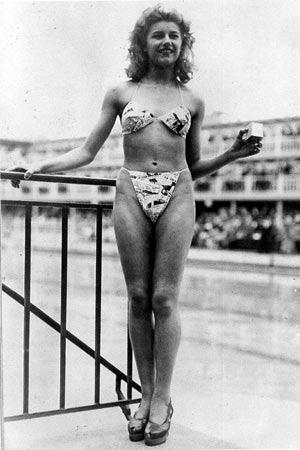

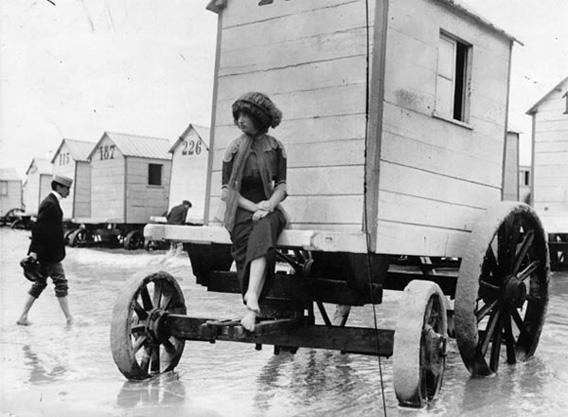
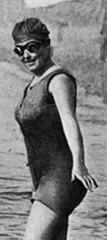
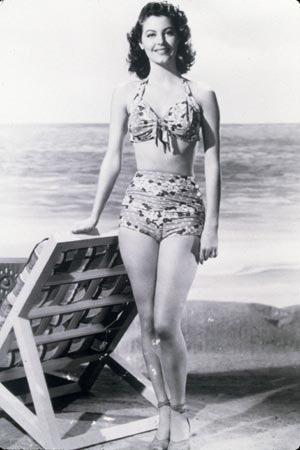
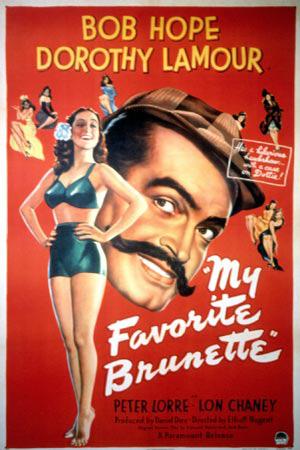

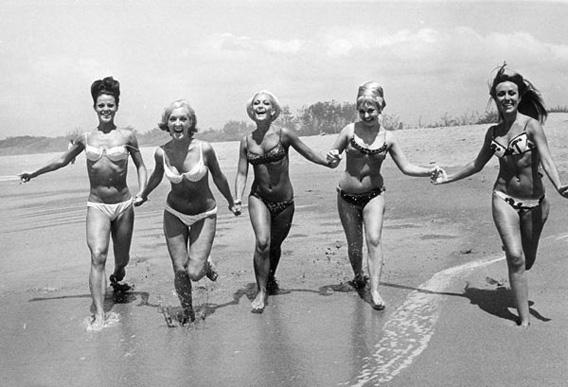
No comments:
Post a Comment